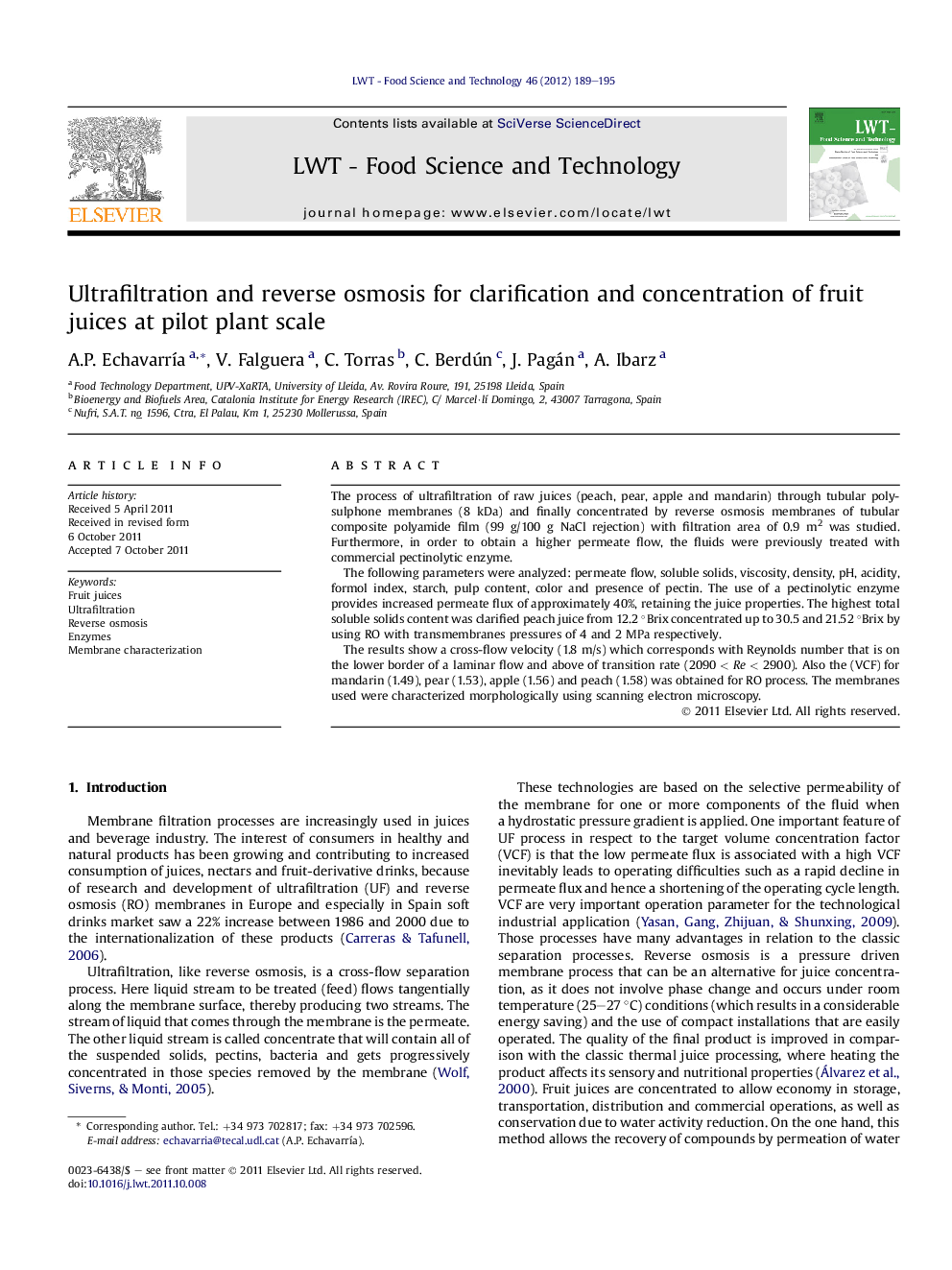| Article ID | Journal | Published Year | Pages | File Type |
|---|---|---|---|---|
| 6405401 | LWT - Food Science and Technology | 2012 | 7 Pages |
The process of ultrafiltration of raw juices (peach, pear, apple and mandarin) through tubular polysulphone membranes (8 kDa) and finally concentrated by reverse osmosis membranes of tubular composite polyamide film (99 g/100 g NaCl rejection) with filtration area of 0.9 m2 was studied. Furthermore, in order to obtain a higher permeate flow, the fluids were previously treated with commercial pectinolytic enzyme.The following parameters were analyzed: permeate flow, soluble solids, viscosity, density, pH, acidity, formol index, starch, pulp content, color and presence of pectin. The use of a pectinolytic enzyme provides increased permeate flux of approximately 40%, retaining the juice properties. The highest total soluble solids content was clarified peach juice from 12.2 °Brix concentrated up to 30.5 and 21.52 °Brix by using RO with transmembranes pressures of 4 and 2 MPa respectively.The results show a cross-flow velocity (1.8 m/s) which corresponds with Reynolds number that is on the lower border of a laminar flow and above of transition rate (2090 < Re < 2900). Also the (VCF) for mandarin (1.49), pear (1.53), apple (1.56) and peach (1.58) was obtained for RO process. The membranes used were characterized morphologically using scanning electron microscopy.
⺠The concentration by reverse osmosis is limited by membrane fouling. ⺠Those fluids has been reported to change from Newtonian into pseudoplastic. ⺠The evolution of permeate flux with time in an ultrafiltration process.
